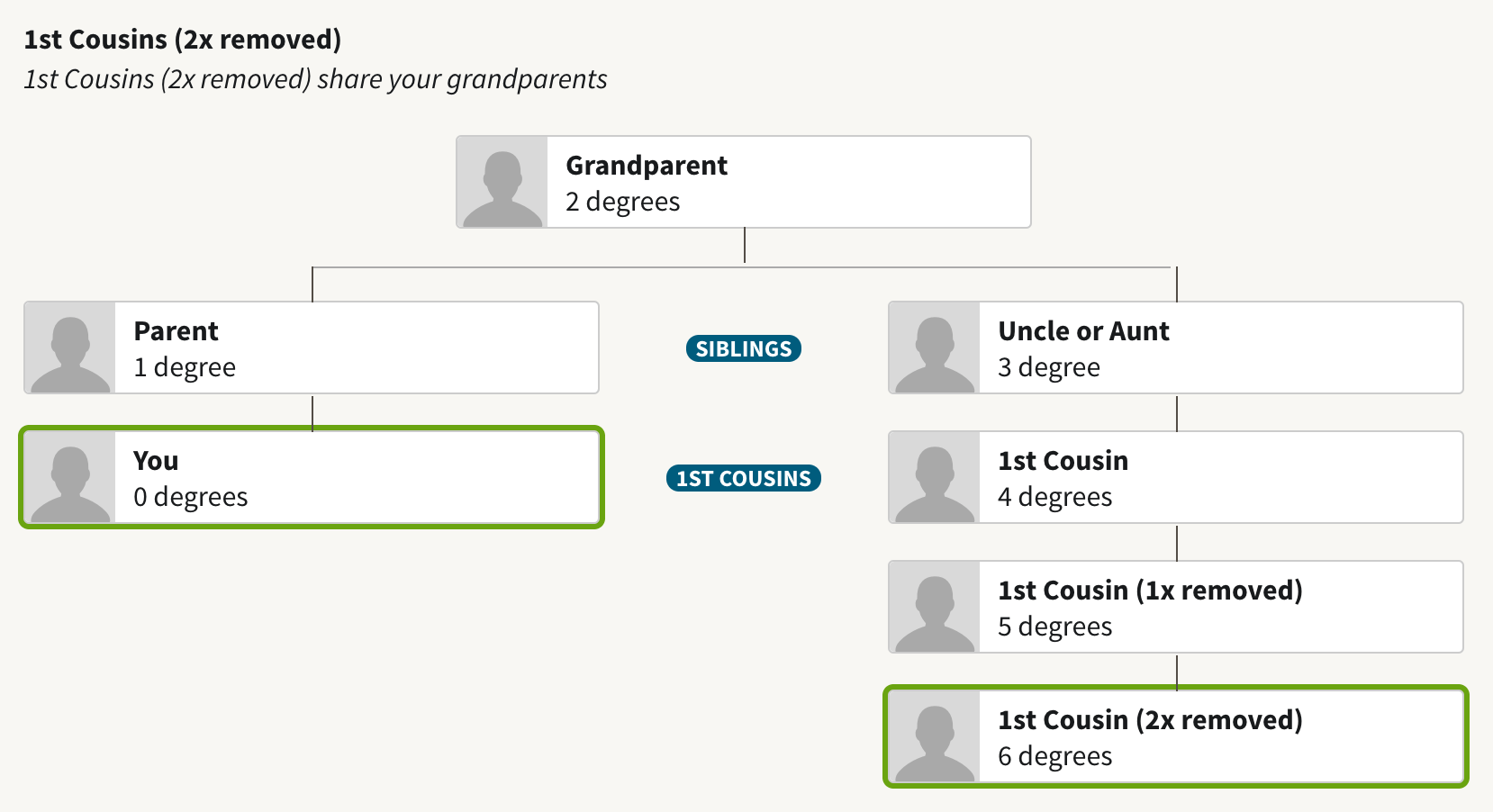
If you share only 300 cMs, however, then you could know for sure that your parents were half siblings.If you share 600 cMs with someone who you believe to be a first cousin, you can’t use shared DNA to determine if your parents were half-siblings.
#MY DNA MATCHES 14% OF ANOTHER PERSON FULL#
The other relationships that you can expect see to share similar amounts of DNA (like the amounts shared between half-first cousins) are:Īs you can see, the top of the range of shared DNA between half-first cousins overlaps with the lower end of the range of shared DNA between two full first cousins. Just like with full first cousins, there are other relationship categories that fall within the same 215-650 cM range for shared DNA. The range of shared DNA between two half-first cousins: 215 – 650 cMs They will always share a substantial amount of DNA, however. How much DNA do you share with a full first cousin (half)?Īs you might expect, half-first cousins will share approximately half as much DNA as full first cousins. The other relationship categories that have a similar range of shared DNA are: There are other relationship categories that have ranges of shared DNA that overlap the first cousin range, so you will have to use shared DNA, along with other information, in order to determine your exact relationship. The average amount of shared DNA between first cousins from my own personal research is 897 cMs. From the cases that I have worked, verified full first cousins have ranged from 730-1081. Most of the time, the shared DNA will fall towards the middle of this range. These are the generally accepted shared cM amounts between two first (full) cousins. Note: You will always, always, always share DNA with a first cousin – even if they are a half first cousin.

How much DNA do you share with a first cousin (full)? First cousin matches are fairly close relatives, and for this reason, there is a specific range of shared DNA – measured in centimorgans – that is typically found between two first cousins. Your DNA testing company looks at the size and quantity of shared DNA segments in order to predict your relationship with your DNA matches. Valid DNA segments can be as small as 6 or 7 centimorgans, and as long as about 280 centimorgans (cMs). We usually only pay attention to segments that are larger than about 6 or 7 centimorgans, since segments that are smaller than that are usually only “ coincidentally identical” matches. Family members of different relationship distances will share at least one segment of DNA – and sometimes many more than one.Įach DNA segment is measured in terms of centimorgans. In genetic genealogy, we prefer use the term “ centimorgans” as a unit of measurement for describing the length of shared DNA segments between two family members. How DNA is typically measured for the purposes of genealogy

Full first cousins share two grandparents, and half-first cousins only share one grandparent.įor example, if your grandfather divorced after your father was born, remarried and then had your uncle with his new wife, then a child of that second marriage will be a half-first cousin – since you only share one grandparent (your grandfather).

You will share more DNA with a full first cousin than a half first cousin. Do full and half-cousins share the same amount of DNA?


 0 kommentar(er)
0 kommentar(er)
